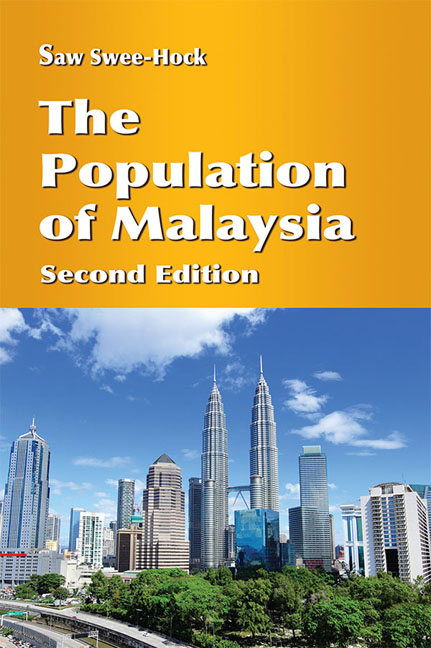Book contents
- Frontmatter
- Contents
- List of Tables
- List of Figures
- Foreword
- Preface
- 1 Introduction
- 2 External Migration
- 3 Internal Migration
- 4 Ethnic and Religious Patterns
- 5 Population Growth and Distribution
- 6 Population Structure
- 7 Nuptiality Trends and Patterns
- 8 Fertility Trends and Differentials
- 9 Mortality Trends and Differentials
- 10 Labour Force
- 11 Future Population Trends
- Bibliography
- Index
Foreword
Published online by Cambridge University Press: 19 May 2017
- Frontmatter
- Contents
- List of Tables
- List of Figures
- Foreword
- Preface
- 1 Introduction
- 2 External Migration
- 3 Internal Migration
- 4 Ethnic and Religious Patterns
- 5 Population Growth and Distribution
- 6 Population Structure
- 7 Nuptiality Trends and Patterns
- 8 Fertility Trends and Differentials
- 9 Mortality Trends and Differentials
- 10 Labour Force
- 11 Future Population Trends
- Bibliography
- Index
Summary
Demography is both destiny and social structure. Understanding the patterns and dynamics of population reveals key directions of social change and describes the way a society is organized. This is demonstrated amply by Professor Saw Swee-Hock's magisterial The Population of Malaysia.
First published in 2007, Professor Saw's account has proven an indispensable resource to policy makers and social scientists alike. It is crucial for understanding modern Malaysia, but also to bringing Malaysia effectively into comparative analyses. This last is all the more important because Malaysia is an increasingly prominent country in Southeast Asia and on the global stage. Indeed, one might suggest more broadly that the demography and social science of Southeast Asia has become more globally significant as the region develops and increases its global economic participation and leadership, and as it integrates in pursuit of both security and prosperity.
Moreover, Malaysian population dynamics are not simply a local example of general global trends. Malaysia has very specific population patterns that add distinctive purchase to comparative accounts. Its blend of internal and external migration, for example, and the relationship of this to ethnic and religious identities, labour force and economic growth, and national integration shed light on global issues but also help to give the country its own identity — and to some extent issues to address.
As Professor Saw shows, Malaysian population patterns are the result both of planning — including explicit population policies — and unplanned social dynamics. Professor Saw situates these in historical and indeed geographical perspectives that are both useful. Understanding the ways in which Malay, Indian and Chinese populations have interrelated with each other and the land and the organisation of production and trade over centuries is crucial background to understanding not just ethnic or religious patterns today, but basic demographic patterns like population distribution and labour force participation.
In its new addition, Professor Saw's account remains both an authoritative source and an accessible overview. It has been brought up to date with new data and new insights. I am happy to recommend it.
- Type
- Chapter
- Information
- The Population of Malaysia , pp. xv - xviPublisher: ISEAS–Yusof Ishak InstitutePrint publication year: 2015



